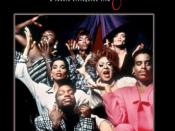Assume for a second that everyone is equal. All things considered, the mere deliberation of this draws close to impossibility. Identity is malleable. Cosmetics can be a simple change; both trans- sexuality and race modification are a tad more extreme venues of expression. Unfortunately, the populace acts differently to different people. Human nature rejects the alteration of the current social stratifications. This holds as much in the 1950?s, during the time when John Howard Griffin wrote Black Like Me, as it did in 1991, the time that the film Paris is Burning was released. Both ?texts? investigate individuals that are passing as someone with a stigma.
Written as a series of dated journal entries, Black Like Me provides handsome insight into the wide wonderful world of bigotry. It is a comprehensive and (surprisingly?) collected recounting of the steps he took to turn from white to black, then his life as a black man, and finally the media attention he got after his experience became known.
The most fascinating part of the book was how it highlighted the differences in attitude and conditions in different areas of the South. New Orleans was tolerant. Mississippi was harshly intolerant to the point that even casually glancing at a poster with a white woman on it could get a black man into trouble. People tolerated Griffin in different ways in different places based merely on the color of his skin.
The miracle of Paris is Burning is that director Jennie Livingston takes a subject that could have very easily become a freak show and allows the people in it their humanity. We learn their views of homosexuality, men, women, their hopes, their disappointments, and their dreams. Some of these dreams are so unattainable it is tragic. The men and women in this movie...


